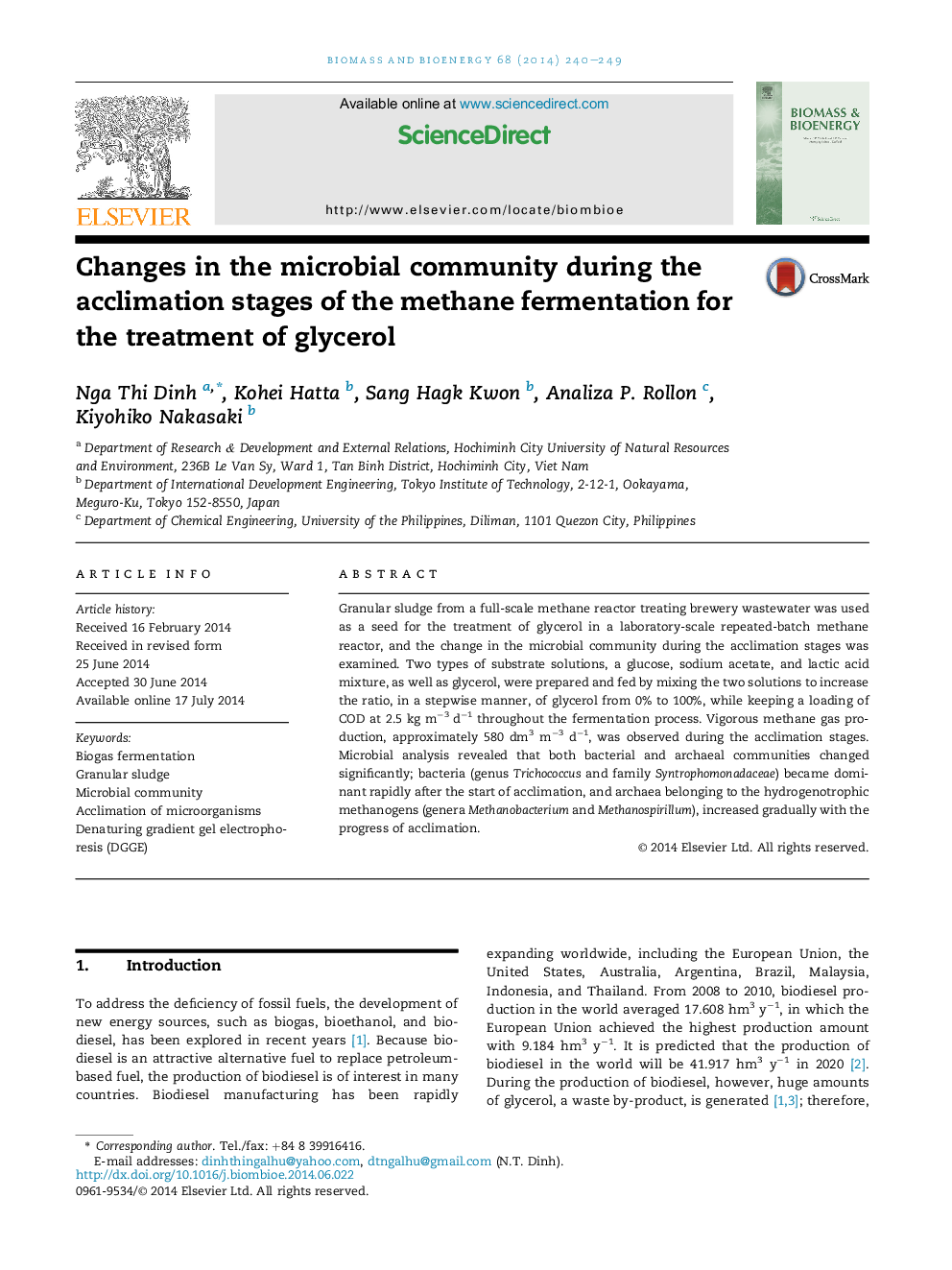| Article ID | Journal | Published Year | Pages | File Type |
|---|---|---|---|---|
| 7064441 | Biomass and Bioenergy | 2014 | 10 Pages |
Abstract
Granular sludge from a full-scale methane reactor treating brewery wastewater was used as a seed for the treatment of glycerol in a laboratory-scale repeated-batch methane reactor, and the change in the microbial community during the acclimation stages was examined. Two types of substrate solutions, a glucose, sodium acetate, and lactic acid mixture, as well as glycerol, were prepared and fed by mixing the two solutions to increase the ratio, in a stepwise manner, of glycerol from 0% to 100%, while keeping a loading of COD at 2.5 kg mâ3 dâ1 throughout the fermentation process. Vigorous methane gas production, approximately 580 dm3 mâ3 dâ1, was observed during the acclimation stages. Microbial analysis revealed that both bacterial and archaeal communities changed significantly; bacteria (genus Trichococcus and family Syntrophomonadaceae) became dominant rapidly after the start of acclimation, and archaea belonging to the hydrogenotrophic methanogens (genera Methanobacterium and Methanospirillum), increased gradually with the progress of acclimation.
Keywords
Related Topics
Physical Sciences and Engineering
Chemical Engineering
Process Chemistry and Technology
Authors
Nga Thi Dinh, Kohei Hatta, Sang Hagk Kwon, Analiza P. Rollon, Kiyohiko Nakasaki,
